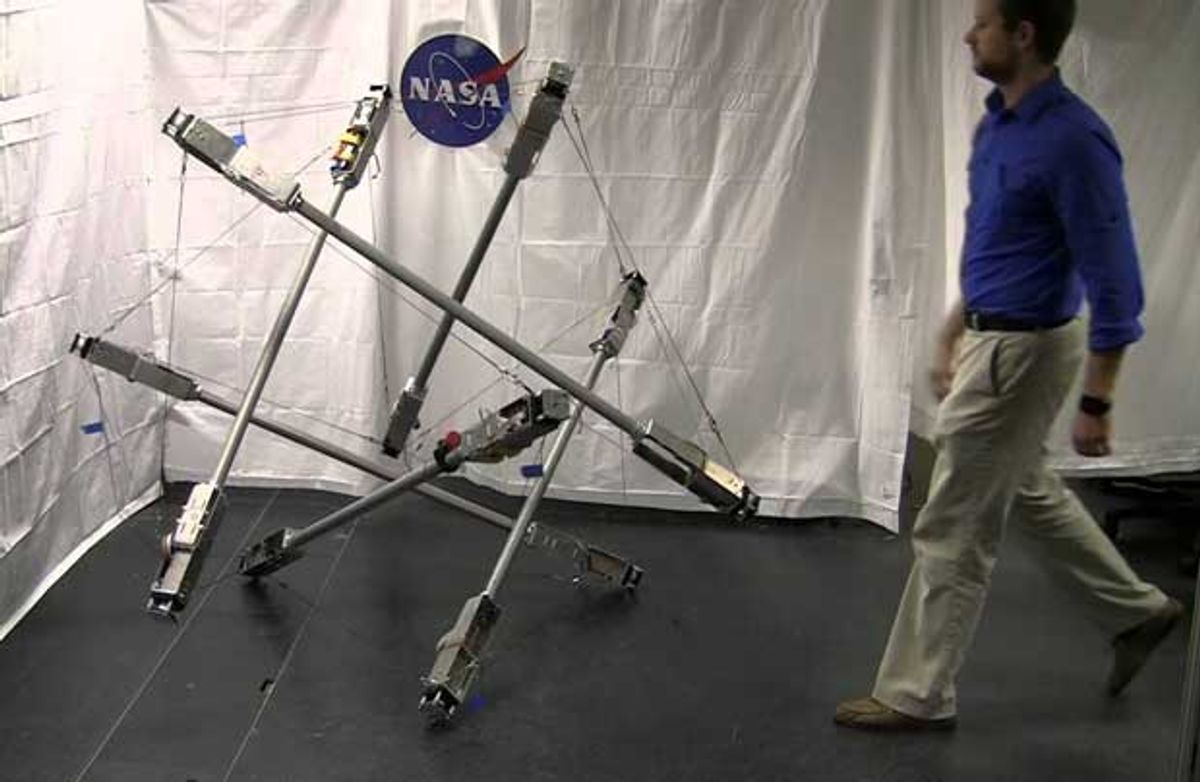NASA’s Super Ball Bot has to be one of the most bizarrely and effectively innovative robot designs we’ve ever come across. It’s a tensegrity structure, nothing more (and nothing less) than a bunch of rods connected by a bunch of cables. It’s almost certainly not what you picture when you think of a robot, much less a robot that’s intended to head into space. At NASA Ames Research Center, they’ve been working on this project through NASA’s Innovative Advanced Concepts (NIAC) program, and we have an update for you about what they’ve been up to.
Here’s a great video where NASA researchers Vytas SunSpiral and Adrian Agogino describe the robot’s potential capabilities:
And here’s a more recent video with some of their latest experiments.
The primary advantage of tensegrity structures is that they are excellent at distributing forces. Since there is no rigid connection between any of the structure elements of the robot, they’re easy to pack, easy to unpack, and extraordinarily resilient to external forces, since any external stress gets absorbed across the entire structure of the robot. This means that you can drastically reduce the mass of the robot and still end up with something strong enough to meet your mission requirements.
Super Ball Bot also features tunable stiffness. By increasing or decreasing the tension on the cable network, the bot can transform from a nearly rigid structure to a squishy and compliant pile of interconnected sticks. Those sticks are the muscles of the robot, containing motors that wind and unwind the cables. And by making the right cables the right lengths at the right times, the sticks can make the robot move.
Saying that it rolls might be a bit optimistic (it “flops,” really), but it can move in any direction, has no problems with rough terrain, and can even make its way up hills. If you do somehow manage to break something on the robot, it can keep itself going even after 75 percent of its actuators are non-functional, or even if a cable snaps.
For the last year or so, NASA has been working on a much larger and more complex version of the robot, called SUPERball. SUPERball has 12 actuators (the final robot will have 24), enough to really explore how to make the robot move effectively. It’s also large enough that a scientific payload can be suspended inside to see how it fares, and modular to be able to test out different structural configurations.
Here’s the latest version of the robot, which will be presented at the IEEE International Conference on Robotics and Automation (ICRA) 2015 in Seattle:
Long term, a robot like this could be perfect for exploring a place like Titan, Saturn’s largest moon, where the atmosphere and relatively low gravity means that you could drop the robot as-is from orbit without any additional descent paraphernalia and it would make it to the ground completely unscathed.
There are also a few other intriguing ideas, like this:
Or how about this:
We’re looking forward to learning more about these concepts at ICRA in May.
[ Super Ball Bot ] via [ Being Human ]
Evan Ackerman is a senior editor at IEEE Spectrum. Since 2007, he has written over 6,000 articles on robotics and technology. He has a degree in Martian geology and is excellent at playing bagpipes.





